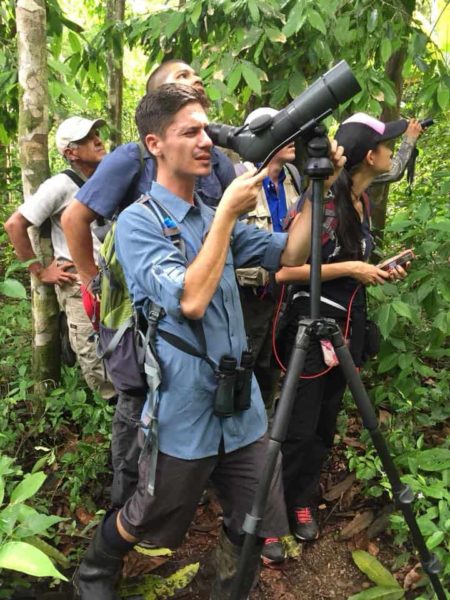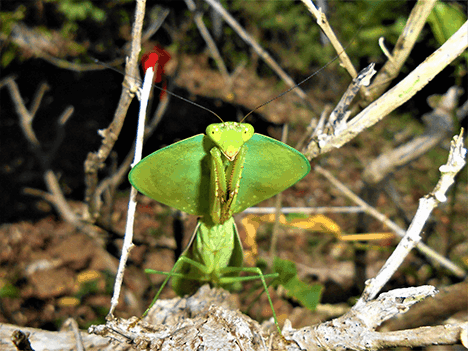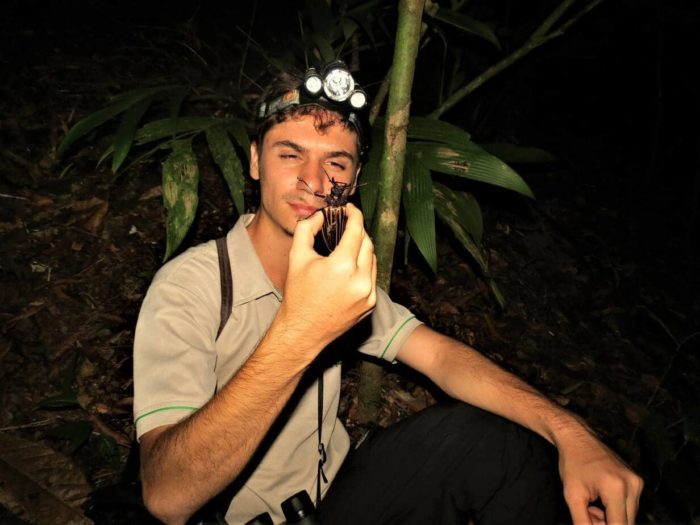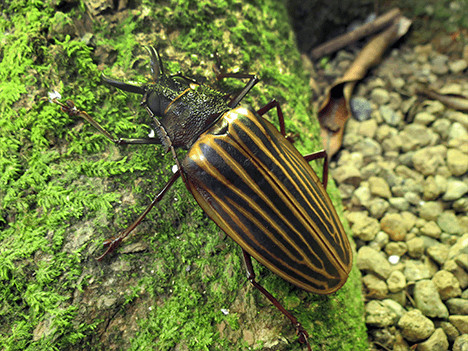The Osa Peninsula in Costa Rica’s South Pacific is a corner of paradise, named the most biologically intense place on Earth due to its striking natural setting.
This highly endemic region houses 2.5% of the planet’s biodiversity. However, it has not been thoroughly studied, and many of the species that inhabit it remain to be discovered.

Insect populations account for 85% of all animals that live in the Osa Peninsula. In spite of this, insects — which are the largest group in this region, and play a crucial ecological role in supporting the Osa Peninsula’s biodiversity — are unknown creatures by many.
In response to this lack of information was born Insectopia Insect Museum, an organization dedicated to strengthening research, preservation and education of insects in the Osa Peninsula. Insectopia is located in Puerto Jimenez, Puntarenas, and is the first and largest entomological scientific collection in the South Pacific region.
The collection aims to be an information bank that provides long-term data on the current state and importance of the region’s insects.
This insect inventory is a valuable reference for ecology, genetics, conservation and, above all, for monitoring environmental changes in the Osa Peninsula that are caused by global warming, climate change, pollution, fragmentation of forests and others.
By studying population behavior, more can be done to preserve the Osa Peninsula’s biodiversity.
The Tico Times recently spoke with entomologist Jim Córdoba, the president and founder of Insectopia Insect Museum to learn more about his initiative.
“We have the responsibility to carry out concrete actions for the conservation of biodiversity in the Osa Peninsula,” Córdoba said. “We need to first understand each species and its functions to study the complex network of relationships in the ecosystems. We also understand that a vast number of species highly depend on the ecological role insects play in their ecosystems.”
Insects’ ecological role in Costa Rica
Córdoba said insects strengthen and support biodiversity while delivering value through the provision of food and water — something called ecosystem services.
In Costa Rica, for example, agriculture plays a large role in the local economy, and many crops depend to a certain extent on insects. Bees, wasps, butterflies, ants, beetles and others protect vegetation and plants through pollination and pest control, influencing the country’s global contributions.
A large percentage of terrestrial plants depend on insects for pollination, Córdoba said, and animal pollinators’ assistance is key in flowering plant reproduction and in the production of most fruits and vegetables.
However, Córdoba estimated that even though insect population in the rainforest is very important, only 20 percent of it has been the subject of scientific research.
“Insects are excellent bio indicators. They are able to unveil many of nature’s secrets. In my opinion, they are beautiful, mysterious and interesting,” Córdoba said.
“Insects have been on Earth for almost 480 million years. They are known as the engine of the ecosystems because of their vital ecological role that consists of interconnecting the various trophic chains that exist.”

Scientific research challenged by the region’s remoteness
Córdoba said the Osa Peninsula’s inaccessibility limited scientific research in the region, and that even until today many taxonomic groups or species are not known.
“The Osa Peninsula was an inaccessible area,” Córdoba said. “In the 1950s-70s, essential commodities like food supply – rice, beans – were transported by a motorboat which landed each month in Puerto Jimenez, where locals traded gold for these food staples. At the time, this was the region’s main livelihood.”
It took until the late 1980s for the road infrastructure to develop to allow for better research.
Threats to insects in the Osa Peninsula
Córdoba said insects have been threatened by monoculture plantations, which cause a loss of habitat and also introduce harmful chemical pesticides.
The fig tree, for example, is considered a keystone species in the Osa Peninsula. It’s a species on which others in the ecosystem depend. Without keystone species, an ecosystem would be dramatically different or could cease to exist.
Fig trees count on the pollination role of a microscopic wasp (Blastophaga psenes) to produce fruits. Without this tiny wasp — which is threatened by pesticides — the fig trees would produce smaller fruits, which would have a negative effect on spider monkeys, the tapir (known in Costa Rica as the danta) and others.

Córdoba said that another threat to Osa Peninsula insects is the interchange of species or gene exchange by interbreeding.
He cited unregulated butterfly parks that he believes lack appropriate supervision by an accredited biologist or expert. The butterfly parks introduce new butterfly species to the South Pacific region, which alters the composition of the gene pool of endemic butterflies unique to the Osa Peninsula.
“The last, but most important factor, is climate change, which has threatened the Osa Peninsula’s cloud forest,” Córdoba said. ‘This has resulted in the migration of species from the Osa Peninsula to move upward to the Talamanca mountains in Limón. At the same time, it could put in danger species that are only able to survive in this cloud forest.”
Promoting environmental education in Costa Rica
“We believe that conservation is the management of the human behavior – it’s about instilling values that will strengthen environmental protection efforts,” Córdoba said. “Environmental education is key, and it is also important to know in a tangible way what biodiversity really means.
“For many people, ‘2.5% of the world’s biodiversity’ can be an abstract figure. It is hard to imagine the vast range of life forms that encompasses that number. That’s why you need to perceptibly understand the hidden wonders you can find in the Osa Peninsula.
“Through this insect collection, what we seek is to get entomologists, researchers and students from Costa Rica and from other countries around the world to understand, in some way, the Osa Peninsula’s vast biodiversity.
“Every time I conduct field work, I keep discovering new species. There is still too much to learn.”
To learn more about their work, visit Insectopia Insect Museum’s Facebook page.
This article was sponsored by the Costa Rica USA Foundation (CRUSA). The Tico Times Costa Rica Changemakers section is a sponsored partnership between The Tico Times and CRUSA.







